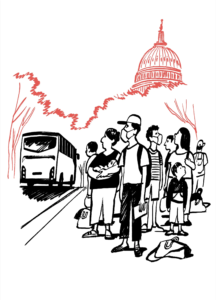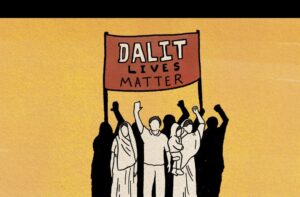On Tuesday, Dr. Anthony S. Fauci, the nation’s leading expert on infectious diseases, acknowledged at a news conference that he expects black people will continue to die of the coronavirus at disproportionate rates.
Fewer than a dozen states have published data on the race and ethnic patterns of the pandemic, but the picture is becoming clear. In Milwaukee County, blacks represent only one-quarter of the population, but 45 percent of the coronavirus cases and 70 percent of deaths. In Michigan, where 14 percent of the population is black, they make up a disproportionate percentage of cases (33 percent) and deaths (41 percent). And in Chicago, blacks make up half of all cases and 70 percent of the deaths even though the city is only one-third black.
This data is central to understanding injustice and ensuring the optimal health of people, but it is gravely missing in this crisis — missing from health department websites, daily updates by political leaders and, until recently, news reports.
We health professionals fear that Covid-19 will further widen existing health gaps. That’s why my organization, the American Medical Association, is calling on laboratories, health institutions, state and local health departments and the Department of Health and Human Services to standardize, collect and publish race and ethnicity data so that we can begin to prioritize equity and effectively manage this pandemic.
We need to know who receives tests, who tests positive, who is hospitalized, who dies and eventually who receives treatment and a vaccine. That also goes for clinical trials, which, historically, have largely excluded black and brown people.
Without this information, we limit our ability to fully understand this pandemic or create messaging that is effective at quelling misinformation and fears. It also means we can’t ensure equitable access to testing and treatment or fair distribution of resources.
To be sure, the chaos around testing — unequal access to kits, unclear processing guidelines, backlogs of performed tests — will hinder us in fully understanding the impact of the virus.
And while it’s appropriate that we prioritize the testing of those who are critically ill, we are missing the chance to test those who may have been exposed to the coronavirus. This is further fueled by the fact that those most marginalized, such as communities of color, may not have the same access to testing as others and may distrust health institutions, preventing them from seeking care. This is a recipe for undercounting, keeping structural harms and disease burden invisible.
Our call for the reporting of racial and ethnic data is not based on a poisonous argument that some races are more susceptible to the coronavirus. Our call, instead, is based on widely known history that American health institutions were designed to discriminate against blacks, whether poor or not. My own organization, for example, made it harder for blacks to obtain a medical degree and practice medicine, with negative repercussions still evident to this day.
Natural disasters and epidemics compound the burden of disease experienced by certain communities. In the 1918 flu pandemic, Jim Crow policies meant blacks received inferior care, if they received any. The 1995 heat wave in Chicago killed more than 700 people, disproportionately in black and low-income neighborhoods.
And numerous empirical studies confirm gross differences in life expectancy by race and ethnicity, gaps that appear at the national and local levels. In Chicago, for example, there is a nine-year gap between the life expectancies for black and white residents, with more than 3,000 excess deaths (deaths that would not have occurred if the black mortality rate were equal to the white mortality rate) among black people there every year. Add Covid-19 to the mix and there’s an even richer recipe for devastation.
Black communities have experienced the consequences of structural inequities in wealth, housing and education, to name a few areas. Our scientific data, along with the stories from everyday people, is what sheds light on these realities.
When the time comes to rebuild our health systems, we must commit to finding ways to structure and standardize the collection of all types of demographic data, of information not only about race and ethnicity, but also gender identity, sexual orientation and preferred language that have made people more vulnerable to the blows of public health emergencies. When institutions register patients, they must also have these categories on intake forms. Not everyone collects this information, but it must become the normal way of doing business.
In 1899, W.E.B. Du Bois advised in his seminal study on the black community in Philadelphia that “we must study, we must investigate, we must attempt to solve; and the utmost that the world can demand is, not lack of human interest and moral conviction, but rather the heart-quality of fairness and an earnest desire for the truth despite its possible unpleasantness.”
Any effective plan to fight Covid-19 must be shaped by an understanding of its spread and impact among communities of color and others marginalized in society. If we ignore structural inequities, we will ultimately increase the burden of disease not just for those most marginalized but for everyone.
This article has been updated to reflect news developments.




